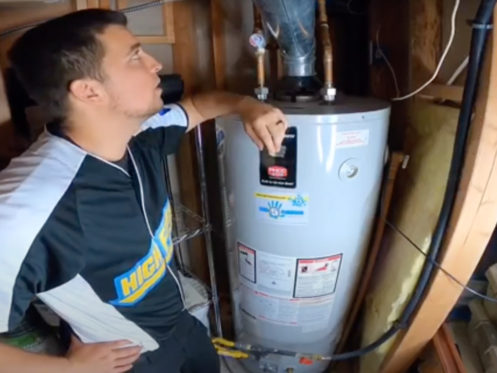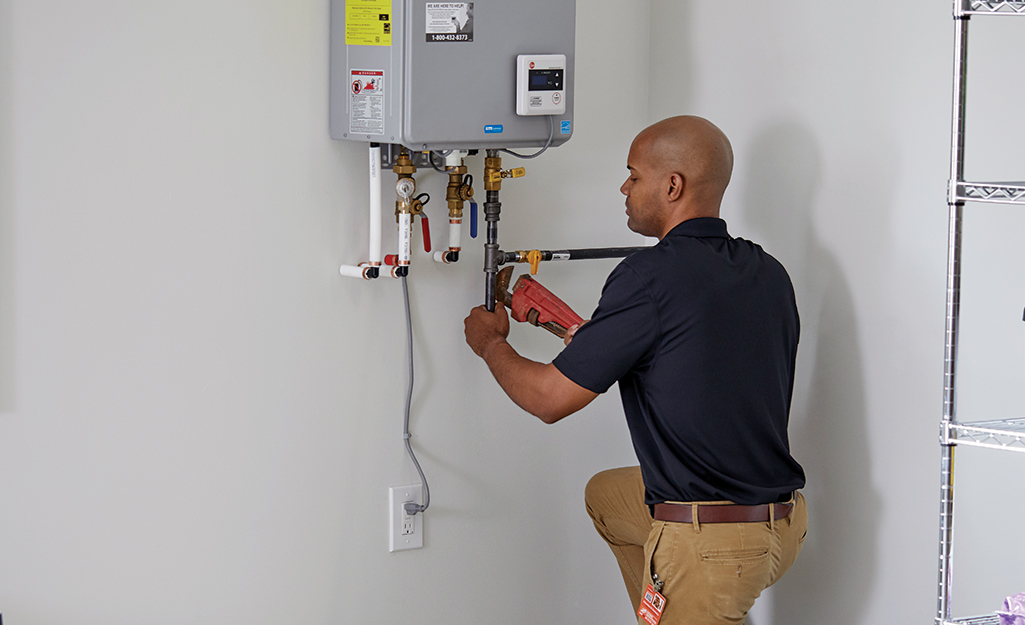Steps to Prolong the Lifespan of Your Home's Hot Water System Through Maintenance
Steps to Prolong the Lifespan of Your Home's Hot Water System Through Maintenance
Blog Article
The article on the next paragraphs pertaining to What Kind of Maintenance Do Water Heaters Need? is exceedingly captivating. You should see for yourself.

Hot water is essential for day-to-day convenience, whether it's for a revitalizing shower or cleaning meals. To ensure your hot water system runs efficiently and lasts much longer, regular upkeep is crucial. This post supplies useful tips and understandings on exactly how to maintain your home's warm water system to prevent disturbances and expensive repairs.
Intro
Preserving your home's hot water system may seem daunting, however with a couple of basic steps, you can guarantee it operates efficiently for many years to find. This guide covers whatever from understanding your warm water system to DIY upkeep tips and recognizing when to call expert help.
Value of Maintaining Your Warm Water System
Regular maintenance not only expands the lifespan of your warm water system but likewise ensures it operates successfully. Ignoring maintenance can cause decreased effectiveness, greater energy expenses, and also early failure of the system.
Indications Your Warm Water System Needs Upkeep
Knowing when your hot water system needs interest can protect against major problems. Keep an eye out for signs such as inconsistent water temperature, odd sounds from the heater, or corroded water.
Understanding Your Hot Water System
Prior to diving right into upkeep tasks, it's practical to understand the fundamental parts of your hot water system. Typically, this includes the water heater itself, pipes, anode rods, and temperature controls.
Month-to-month Maintenance Tasks
Routine month-to-month checks can aid catch minor issues before they intensify.
Purging the Hot Water Heater
Purging your water heater removes debris buildup, improving effectiveness and extending its life.
Monitoring and Changing Anode Rods
Anode poles protect against rust inside the tank. Examining and replacing them when worn is vital.
Evaluating and Readjusting Temperature Level Setups
Readjusting the temperature settings guarantees optimal performance and safety.
DIY Tips for Maintenance
You can perform numerous upkeep jobs yourself to keep your hot water system in top condition.
Looking for Leakages
Regularly inspect pipelines and links for leakages, as these can cause water damages and greater costs.
Examining Stress Relief Valves
Evaluating the pressure relief valve guarantees it functions correctly and prevents too much stress accumulation.
Insulating Pipes
Shielding warm water pipes decreases heat loss and can save power.
When to Call a Specialist
While DIY maintenance is beneficial, some issues call for expert knowledge.
Complex Concerns Calling For Professional Aid
Examples include significant leaks, electric issues, or if your hot water heater is constantly underperforming.
Routine Specialist Upkeep Benefits
Specialist maintenance can consist of comprehensive inspections, tune-ups, and making certain compliance with safety criteria.
Conclusion
Normal maintenance of your home's hot water system is essential for performance, durability, and price savings. By following these ideas and knowing when to seek specialist assistance, you can make sure a trusted supply of hot water without unanticipated disturbances.
How to Maintain an Instant Hot Water Heater
Before tinkering with your hot water heater, make sure that it’s not powered on. You also have to turn off the main circuit breaker and shut off the main gas line to prevent accidents. Also turn off the water valves connected to your unit to prevent water from flowing into and out of the appliance. 2. When you’re done, you have to detach the purge valves’ caps. These look like the letter “T†and are situated on either side of the water valves. Doing so will release any pressure that has accumulated inside the valves while at the same time avoid hot water from shooting out and burning your skin. 3. When the purge valves’ caps are removed, you have to connect your hosing lines to the valves. Your unit should have come with three hoses but if it didn’t, you can purchase these things from any hardware or home repair shops. You can also get them from retail stores that sell water heating systems. Read the user’s manual and follow it to complete this task properly. When the hosing lines are connected, open the purge port’s valves. 4. You should never use harsh chemical cleaners or solutions when cleaning your unit. Make use of white vinegar instead. It should be undiluted and you’ll probably use about 2 gallons. 5. Now flush your water heater. This task should probably take about 40 minutes. We can’t give you specific directions for this because the procedure is carried out depending on the type, model and brand of your heater. With that being said, refer to the user’s manual. 6. When you’re done draining the unit, you have to turn off the purge port valves again. Remove the hosing lines that you earlier installed on each of the water valves. Put the valve caps (purge port) back in their respective places and be very careful so as not to damage the rubber discs that are found inside these caps. 7. Now that everything’s back in place, check your user’s manual again to find out how to reactivate your water heating system. 8. Once it is working, turn one of your hot water faucets on just to let air pass through the heater’s water supply pipes. Leave the tap on until water flows smoothly out of it. https://www.orrplumbing.com/blog/2014/september/how-to-maintain-an-instant-hot-water-heater/

Hopefully you enjoyed reading our piece on Water Heater Maintenance Tips You Can't Afford to Forget. Many thanks for spending some time to read our post. If you please set aside a second to promote this entry if you appreciated it. Thanks a lot for your time. Return soon.
Explore Now Report this page